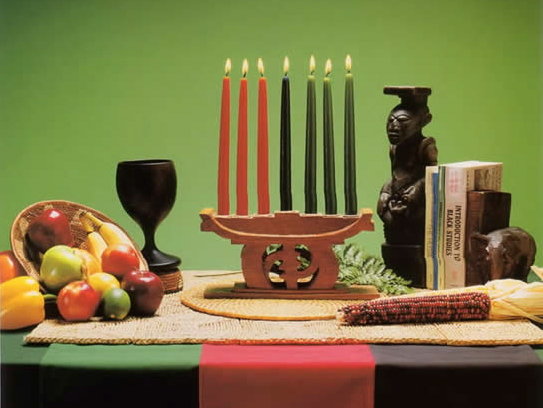When people speak of "the December holidays" they are usually referring to Christmas and Hanukkah. However, there are a variety of lesser-known celebrations that fall from early December to mid-January. Here’s a list of them, and if you know of others, add them via the Talkback feature.
Feast of the Three Kings or Three Kings Day or Epiphany -- Celebrated 12 days after Christmas on Jan. 6, this holiday is considered the last day of the Christmas season. (If you haven’t already, take down the dang tree!)
According to the Bible, this day marks the day the three wise men -- Caspar, Melchior and Balthasar -- arrived in Bethlehem. It is believed by some they saw a star in the sky on the night of Christ’s birth, followed it and were united with the baby Jesus. Once there, they presented him with gold, frankincense and myrrh. Traditionally, people celebrate this day with a large meal, caroling, eating the last of the cookies and, occasionally, burning the tree in a bonfire.
Festivus -- Celebrated on Dec. 23, Festivus is a holiday that was made up by "Seinfeld" writer Dan O’Keefe and was the focus of a 1997 episode. Since it aired, Festivus has become a culty, ironic "holiday" that requires celebrators to erect an unadorned aluminum pole (because "tinsel is distracting") and includes ritual events like the "airing of grievances," the "feats of strength" and the the identification of easily explained events as "Festivus miracles."
The Wagner Companies, a Brown Deer-based company, is the leading maker of Festivus poles.
Kwanzaa -- This week-long celebration takes place from Dec. 26 to Jan. 1 and recognizes African heritage and culture. The holiday was created in 1966 and celebrators light candles and give gifts.
The kinara candelabra holds seven candles: three red on the left, three green on the right and a black candle in the middle. Each night, a new candle is lit in honor of one of seven principles of Kwanzaa: unity, self determination, responsibility, cooperative economics, purpose, creativity and faith. This practice is similar to the lighting of the menorah, a candle lighting ritual practiced by Jews at Hanukkah.
St. Lucia Day -- Celebrated predominantly by Swedes, this holiday takes place on Dec. 13 and recognizes the short life of a young, female, fourth century saint named Lucia. There are many different tales describing what happened on this day, but one story claims Lucia refused to marry a man she did not love and so the man became angry and tried to burn her alive. However, even though she was engulfed in flames, she survived. After realizing this, the man grabbed a sword and stabbed her in the throat. Lucia did not die for another three hours, during which she made many eloquent and poetic statements.
Traditionally, on St. Lucia Day, the eldest daughters dress as St. Lucia and present their parents at wake-up time with lussekatter (buns), pepparkakor (a type of spicy gingerbread cookie) and a song.
St. Nicholas Day -- This holiday usually takes place on Dec. 6 and celebrates the miracles and generosity of the Greek Saint Nicholas, also known as Nikolaos of Myra or St. Nick. Similar to Santa Claus, St. Nick traditionally comes during the night and leaves candy or small gifts in kids’ shoes or stockings.
St. Nick is celebrated mostly by Christian (especially Lutheran) families, but some families have adopted the ritual as a non-secular holiday and more of a mini-Christmas or an event that officially kicks off the Christmas season.
Winter Solstice -- Celebrated on Dec. 21 or 22 in the northern hemisphere and June 21 or 22 in the southern hemisphere, the winter solstice marks the day that the earth’s axis tilt is farthest away from the sun. Technically, it’s "the darkest day of the year," however, winter solstice celebrations usually focus on the fact that -- because the darkest day of the year is about to be over -- each day from that point forward will get lighter and lighter. Hence, the day is a celebration of the "return of the sun."
Many people celebrate the Winter Solstice in order to take part in a non-denominational and / or non-consumer December holiday. Celebrators usually focus on rebirth / fresh starts, spending time with friends, reverence towards nature and the consumption of homemade food and drinks.
Yule -- Yule is a winter festival that was originally celebrated by ancient German cultures as a pagan religious festival. Yule was celebrated based on the lunar Germanic calendar and fell on any day from the end of December to early January. The festival was permanently placed on Dec. 25 when the Christian calendar was adopted.
Traditionally and currently, Yule celebrators adorn logs instead of trees. The logs are found in a natural setting and then drilled with three holes for candles. The log is usually decorated with pine cones, holly and other natural or handmade items. For some people, like the winter solstice, Yule is practiced as a non-denominational, non-consumer-focused holiday.
Molly Snyder started writing and publishing her work at the age 10, when her community newspaper printed her poem, "The Unicorn.” Since then, she's expanded beyond the subject of mythical creatures and written in many different mediums but, nearest and dearest to her heart, thousands of articles for OnMilwaukee.
Molly is a regular contributor to FOX6 News and numerous radio stations as well as the co-host of "Dandelions: A Podcast For Women.” She's received five Milwaukee Press Club Awards, served as the Pfister Narrator and is the Wisconsin State Fair’s Celebrity Cream Puff Eating Champion of 2019.




